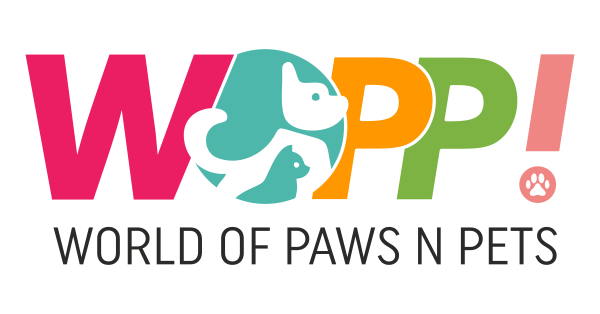Recently, Queer Eye co-stars Jonathan Van Ness and Antoni Porowski captured headlines by hinting that they were in a relationship—and then revealing that they were actually just in business together, launching a pet food brand called Yummers. So far, it sells just one kind of product, “gourmet mix-ins” and meal supplements that “drive pets wild.”
Let’s set aside arguments about their stunt and ask another important question: Do pets need “gourmet mix-ins” or food “toppers”? Van Ness and Porowski are not the only ones jumping into this part of the pet food market. TikTok star Jeremy Scheck, who identifies himself as a Gen Z Ina Garten, is using his platform (and his pup) to promote the recently launched Wellness Bowl Boosters.
The idea is that pet food toppers go on top of whatever you usually feed your dog (or in the case of Yummers, your cat, too, but let’s focus on dogs here). Each brand offers a variety of glamourous flavors that look absolutely delicious and feature a mix of protein and vegetables. The chicken and butternut squash recipe from the Wellness pet company made my mouth water! I’m sure that these toppers would be appetizing for pets—I’m trained as a vet, so I know a few things about animals.
Recently, Queer Eye co-stars Jonathan Van Ness and Antoni Porowski captured headlines by hinting that they were in a relationship—and then revealing that they were actually just in business together, launching a pet food brand called Yummers. So far, it sells just one kind of product, “gourmet mix-ins” and meal supplements that “drive pets wild.”
Let’s set aside arguments about their stunt and ask another important question: Do pets need “gourmet mix-ins” or food “toppers”? Van Ness and Porowski are not the only ones jumping into this part of the pet food market. TikTok star Jeremy Scheck, who identifies himself as a Gen Z Ina Garten, is using his platform (and his pup) to promote the recently launched Wellness Bowl Boosters.
The idea is that pet food toppers go on top of whatever you usually feed your dog (or in the case of Yummers, your cat, too, but let’s focus on dogs here). Each brand offers a variety of glamourous flavors that look absolutely delicious and feature a mix of protein and vegetables. The chicken and butternut squash recipe from the Wellness pet company made my mouth water! I’m sure that these toppers would be appetizing for pets—I’m trained as a vet, so I know a few things about animals.
But manufacturers claim that these toppers are not only delicious—they also bring more nutrients to a dog’s diet than regular kibble. What’s more, their assertions sound as if the toppers can help dogs live their very best lives; the copy on their websites and testimonies from their spokespeople even go so far as to imply that not having these add-ons would deprive pets of happiness.
“Bowl Boosters can add not just additional macronutrients (protein, fat, and carbohydrates), but also superfoods and supplements that support an improved well-being and higher total nutrition for the pet,” says Danielle Bernal, a veterinarian who works for the Wellness company. These claims were not entirely convincing to me. Looking at the labels, I didn’t find any specific key ingredient that toppers offer that a regular kibble doesn’t. They also just seemed a little strange: I trained in India, where many pet parents prefer feeding their pets with homemade recipes in consideration of the cost of buying pet food. (Yummers mix-ins are $15 for a small package; Bowl Boosters are $10.)
Given that I don’t have extensive expertise in pet nutrition specifically, I reached out to a few vets who specialize in formulating diet recommendations.
“A dog’s base diet is complete and balanced. It gives them all the nutrients that they need in sufficient amounts and ratios,” says Jonathan Stockman, an assistant professor of veterinary medicine at Long Island University in New York. (Stockman is also a member of the American College of Veterinary Nutrition). He says toppers have been around for about two decades but have gained popularity in recent years as people have become more interested in enhancing the experience their dogs get during mealtime (and as companies look for more kinds of things to sell). There are brands that boast “human-grade” dog food, or formulas that are minimally processed, and there are CBD treats of all sorts, including a CBD oil that can be sprayed onto meals.
But as boring as regular kibble might look to you, it keeps dogs healthy and happy. It even already has fancy-sounding things like antioxidants in it. “They don’t need those toppers at all,” says Stockman.
Apart from claims of providing additional nutrients, Bernal, the veterinarian who works for Wellness, cites palatability as an important reason to include toppers in meals, especially for fussy pets that refuse to eat. Stockman acknowledges that toppers could make some difference in terms of taste. But a topper really is not necessary in terms of supplying more nutrients. “It’s kind of more of a treat,” he explains.
In fact, Stockman finds using toppers to carry a certain amount of risk. Toppers tend to be too high in fat and calories, which could make a pet’s entire diet nutritionally unbalanced. A dog’s digestive system will not properly absorb nutrients from an unbalanced diet, and this could make the animal prone to myriad diseases. Moreover, a calorically dense diet could pave the way to obesity.
Yummers mix-ins, specifically, are clearly an unbalanced topper, argues Lindsey Bullen, a Washington-based veterinary nutritionist. The Yummers mix-ins bag says that the topper is intended for “intermittent or supplemental feeding only,” which Bullen says is a fancy and confusing way of saying that the topper is not complete and balanced. (Yummers didn’t respond to my questions.)
There are certain nutrients that are categorized as “essential,” Bullen explains, like fats, proteins, and vitamins. The body cannot synthesize essential nutrients, so it is crucial that animals get them from food. These essential nutrients need to be in appropriate concentrations to make the diet complete. Yummers mentions that their toppers are only meant for intermittent feeding, which means that the mix-ins don’t have a balanced proportion of nutrients, Bullen says. “I don’t want my pets or my patients to have any more than 10 percent of their calories coming from an incomplete or unbalanced topper.”
Toppers aren’t total junk. There are times when critical care nutritionists like Bullen recommend toppers for their patients—usually when a pet has an illness that makes them unwilling to touch their food. In these cases, vets will suggest using tools like flavorful toppers to encourage them to chow down. This could be any commercial topper that vets trust as nutritionally balanced, or even just a little dollop of regular old yogurt. But it is important to choose the right topper, as each dog has their own specific nutritional requirements, says Bullen.
The bottom line is that a healthy pet isn’t going to be made healthier with the addition of a topper in its everyday diet, according to Bullen. Feeding toppers might look like a great and probably easy way to interact and bond with your pets during their mealtime. But there are other ways to enhance your dog’s life overall. You can keep your dog’s brain busy by making them solve a food puzzle or playing a scent game in your house by hiding smelly treats. Or simply get rid of the bowl for a bit, scatter kibble over the grass, and encourage your dog to hunt for their food. This might not sound as appealing to you as a nice plate of chicken and butternut squash, but dogs love it.



